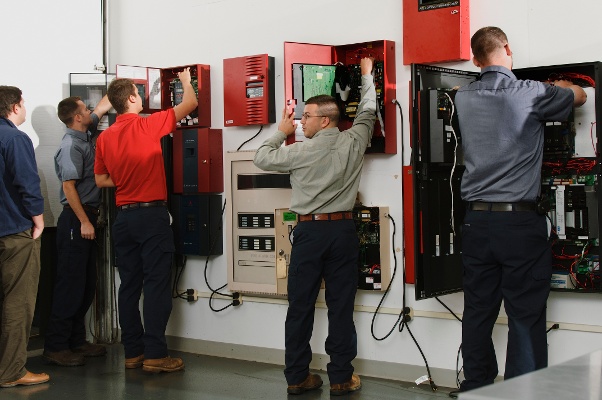
The alarm blares. The strobe flashes. A loud voice comes on overhead.
Even though you’re not near the fire, the fire alarm near you is keeping you safe.
It’s doing its job well, and very loudly. It’s only one part of the whole fire alarm system, but it acts with the whole group.
What a Fire Alarm Control Panel Does
The fire alarm control panel (FACP) is the central hub of operations for a fire alarm system. It tells each component what to do and when to do it. If fire alarms were musicians, the FACP would be the conductor.
Different Types of Control Panels
There are two main types of Fire Alarm Control Panels: conventional and addressable.
Conventional Fire Alarm Control Panels
Although new construction no longer utilizes conventional panels, there are plenty of them still around. Conventional panels operate and report with less specificity; their monitoring doesn't include constant supervision. They can tell which area or zone triggered an alarm, but not which specific device initiated the triggering.
Addressable Fire Alarm Control Panels
Addressable panels are constantly communicating back and forth with each individual part of their system. This means they can report on the condition of each module in every specific initiator and notifier.
Interacting with Control Panels
Control panels are the central hub for the whole system and the point of origin for human interfacing. Both addressable panels and conventional panels communicate with the people and devices in their environments. This is referred to as PMI (person machine interface).
What Control Panels Tell People
Both addressable and conventional panels report back three possible conditions of the fire alarm system.
- Alarm Condition: There has been a detection of an immediate threat to life and property
- Trouble Condition: The system itself is experiencing some kind of problem interfering with its operations
- Supervisory Condition: Something abnormal is going on within the system (such as a valve in the wrong position)
If a building has public access, the control panel has to have the ability to notify emergency personnel if an alarm condition happens.
What People Tell Control Panels
Buttons on the FACP interface provide a way for operators, technicians, and emergency responders to give information to addressable and conventional units.
Acknowledge
This message tells the FACP you know what caused the alarm. It stops the panel from notifying you of the present condition. It does not stop the notifying device. Pulls, detectors, speakers, and strobes are still active.
Silencers
This type of message tells the FACP that everything is safe and ready for humans to reenter the space or stop evacuating. After getting this proverbial “all clear,” the FACP silences all audible and visible notifying devices.
Extra Features for Addressable Panels
Addressable panels may include special features, such as:
- Integrating fire suppression systems
- Integrating sprinkler systems
- Pre-alarm indicators (alarm thresholds, smoke percentages)
- Carbon monoxide detection
- Heat detectors
- Water level sensors
- Perimeter protection
Whether a fire alarm system uses an addressable panel or a conventional one, it needs to undergo proper installation and regular maintenance so it’s ready to perform.
Proper Care of a Fire Alarm Control Panel
At Koorsen Fire & Security, we know fire alarm control panels inside and out. That’s because protecting people and property is central to our business.
From installation to inspections to service and testing, trust Koorsen to orchestrate the safety of your building or business.


